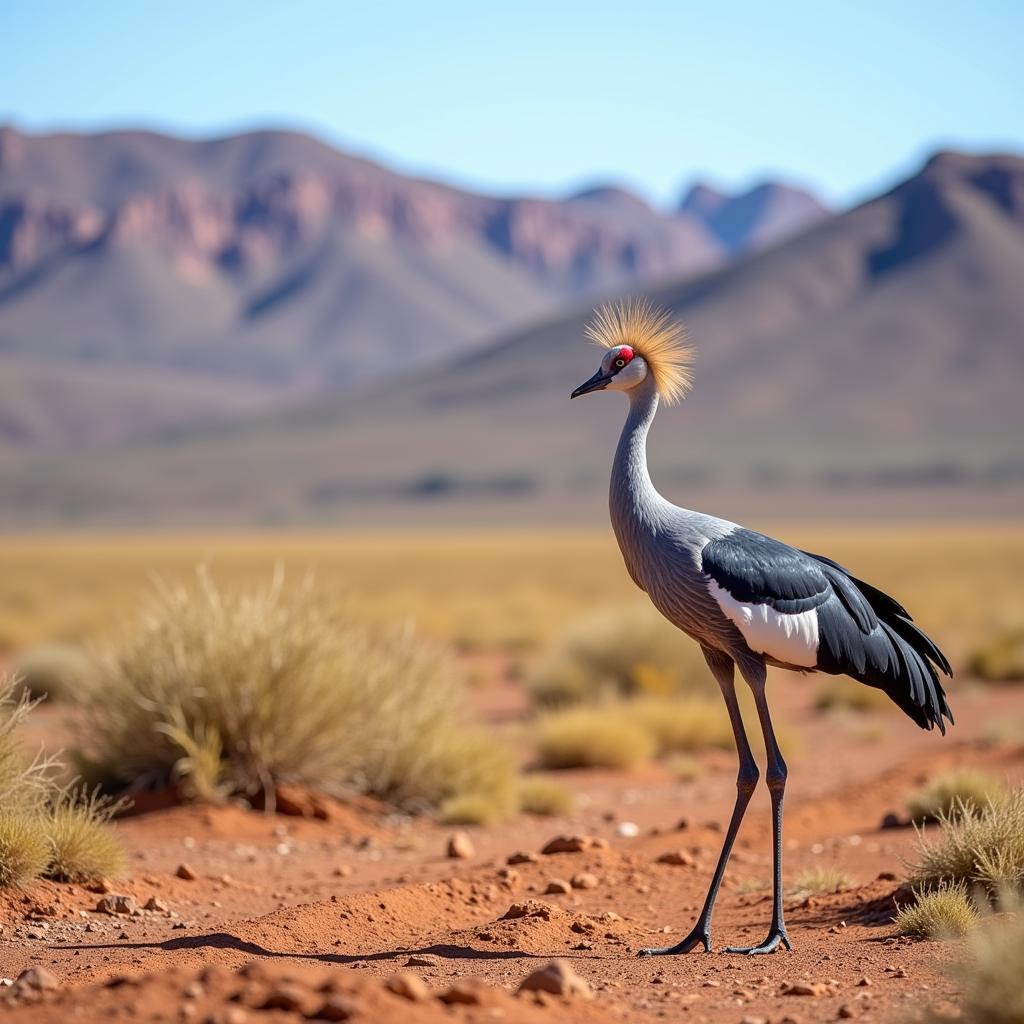Unveiling the Magic: Your Ultimate African Blue Crane Itinerary
Embark on an unforgettable journey with our comprehensive African blue crane itinerary, designed to immerse you in the beauty of these majestic birds and the stunning landscapes they call home. This guide will equip you with everything you need to know for a successful blue crane adventure, from the best viewing spots to essential travel tips.
Where to Witness the African Blue Crane’s Splendor
South Africa is the primary home of the African blue crane, also known as the Stanley crane or the Paradise crane. While they can be spotted across the country, certain locations offer a higher probability of sightings and provide unique experiences.
Overberg Region: A Blue Crane Haven
The Overberg region, particularly the area around the town of Overberg itself, is a renowned blue crane hotspot. The vast farmlands and rolling hills provide an ideal habitat for these elegant birds. Here, you can enjoy leisurely drives and hikes, keeping an eye out for the distinctive blue-grey plumage and graceful movements of the cranes.
Karoo National Park: A Desert Oasis for Cranes
The Karoo National Park, a semi-desert environment in the Western Cape province, offers a contrasting yet equally captivating setting to spot blue cranes. The stark beauty of the landscape provides a dramatic backdrop for these iconic birds. Guided game drives within the park increase your chances of encountering blue cranes alongside other fascinating wildlife.
Where Else to Look for the Blue Crane
Beyond these prime locations, blue cranes can also be spotted in other parts of South Africa. Areas with grasslands, wetlands, and agricultural lands are potential habitats. Keep your eyes peeled while exploring these regions, and you might be rewarded with a glimpse of these magnificent birds.
 A blue crane against the backdrop of the Karoo National Park
A blue crane against the backdrop of the Karoo National Park
Planning Your African Blue Crane Itinerary
Best Time to Visit
The best time to see blue cranes is during the breeding season, which typically runs from September to March. During this time, the cranes are most active and their courtship displays are a sight to behold.
Accommodation Options
Accommodation near blue crane viewing areas ranges from rustic farm stays to luxurious lodges. Choose an option that suits your budget and preferences. Staying in a farm stay allows you to experience the local culture and get closer to nature.
Essential Tips for Crane Viewing
- Respect their space: Maintain a safe distance from the birds to avoid disturbing them.
- Binoculars are essential: A good pair of binoculars will enhance your viewing experience.
- Patience is key: Blue cranes can be elusive, so be patient and persistent.
- Early mornings and late afternoons: These are the best times for crane viewing as the birds are most active.
- Hire a local guide: A local guide can provide valuable insights and increase your chances of spotting blue cranes.
The Significance of the Blue Crane in South African Culture
The blue crane holds a special place in South African culture and heritage. It is the national bird of South Africa, symbolizing grace, beauty, and resilience. The crane is featured on the country’s coat of arms and currency, highlighting its importance to the nation’s identity.
“The blue crane is more than just a bird; it’s a symbol of hope and freedom for South Africa,” says Dr. Nomusa Zondo, renowned ornithologist and conservationist. “Protecting these majestic creatures is vital for preserving our natural heritage for generations to come.”
 A pair of blue cranes performing their courtship dance
A pair of blue cranes performing their courtship dance
Conclusion: Embrace the Blue Crane Experience
An African blue crane itinerary offers a unique opportunity to connect with nature and witness the splendor of these iconic birds. From the rolling hills of the Overberg to the stark beauty of the Karoo, South Africa provides diverse landscapes to explore and discover the magic of the blue crane. Plan your journey today and create memories that will last a lifetime.
Frequently Asked Questions
- What is the best time of year to see blue cranes? The breeding season, from September to March, is the optimal time.
- Where can I see blue cranes in South Africa? The Overberg region and Karoo National Park are prime locations.
- What should I bring for crane viewing? Binoculars, comfortable shoes, and a hat are essential.
- Are blue cranes endangered? Yes, they are classified as vulnerable.
- What is the significance of the blue crane in South Africa? It is the national bird and a symbol of grace and resilience.
- Can I book guided tours for blue crane viewing? Yes, local guides can enhance your experience.
- What type of accommodation is available near blue crane viewing areas? Options range from farm stays to luxurious lodges.
Scenarios and Questions
Scenario 1: You are traveling with children and want to ensure they enjoy the experience.
- Question: Are there child-friendly activities and accommodation options available near blue crane viewing areas?
Scenario 2: You are a photography enthusiast and want to capture stunning images of blue cranes.
- Question: What are the best photography tips for capturing blue cranes in their natural habitat?
Further Exploration
- Read our article on “Conserving the African Blue Crane: Challenges and Successes.”
- Explore our guide to “Birdwatching in South Africa: Top Destinations and Species.”
Need assistance planning your African blue crane adventure? Contact us at Phone Number: +255768904061, Email: [email protected] or visit us at Mbarali DC Mawindi, Kangaga, Tanzania. We have a 24/7 customer support team.


